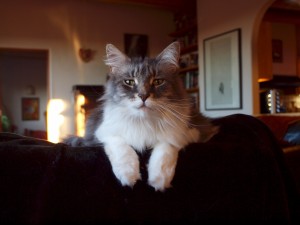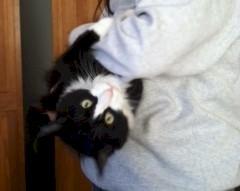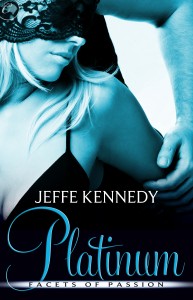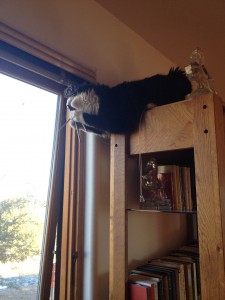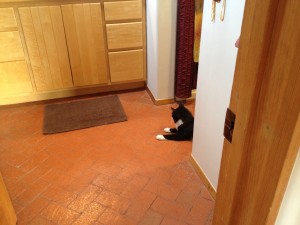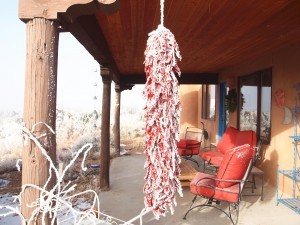 The waxing moon was setting into an oncoming blizzard just at sunrise this morning. Amazing, swirls of cloud and color. I wish you all could have seen it.
The waxing moon was setting into an oncoming blizzard just at sunrise this morning. Amazing, swirls of cloud and color. I wish you all could have seen it.
Last week, B.E. Sanderson, frequent commenter here, had a post on her blog about finishing manuscripts. She’s been doing a lot of interesting posts lately aimed at aspiring writers. This one caught my attention because, hello! Star Trek and science references. I ended up commenting, too, which I don’t seem to do all that much of anymore.
I’ve become the blog-lurker your marketing-advisor warned you about.
At any rate, the discussion was about what to do when you hit that point in your novel where you just don’t want to write it anymore. Every writer has a place where this tends to happen – and for a lot of writers, it’s somewhere around the 30K mark. Worse, it’s very likely that you’ll be tempted at this point to pursue the New Shiny. You’ll get this Fabulous Idea for an even better novel. The temptation to ditch that 30K brick and write the New Shiny will be extreme.
And, if you do this, the New Shiny will be all kinds of rewarding. Until, oh, around the 30K mark. Then guess what?
Exactly. This is why so many hopeful authors have half-finished novels lurking on their hard drives.
I make this distinction, between a hopeful author and a publishing author, because – and I know this is simple logic, but here it is, just to be clear – in order to be a published author YOU MUST FINISH THE BOOK.
Yes, yes, yes – there’s a whole lot more to getting published than that. But we all know this is the first step. Nothing else happens without it.
So, here’s a little list of things to remember about finishing the book.
- The New Shiny is an illusion. That idea is the greener grass on the other side of the fence. It’s the nubile young girlfriend. In the end, it won’t make you any happier than the manuscript you’ve been married to. Write it down and save it for later.
- Apropos of that? Ideas will keep. It may not feel like it, in the rush of inspiration, but once it comes to you, it’s yours. Write down whatever you need to so that you can reconnect with it again in the future. You know what they say about True Love – if he really loves you, he’ll wait.
- There’s a reason why it’s always the same place for you. It comes out of you and how you deal with the world. This is like the guy who always dates women who need rescuing or the gal who ends up in dead-end jobs where she’s treated like a doormat. Growing as a person means solving this problem. So if you have trouble getting started, look at what else in your life you have trouble starting. Other people can never finish stuff. Then practice overcoming this barrier – your own personal three-minute mile. Train, persevere – know that you can do it.
- There’s also a reason why it’s so often the 25-30K mark for so many writers. If you figure a typical novel is 80-120K, then 20-30K is the first 25%. In story structure, even if you think you’re not using it, the first 25% is Act I. In the classic Boy-Meets-Girl/Boy-Loses-Girl/Boy-Gets-Girl-Back scenario, you’ve finished the meeting. In the hero’s journey (get your hero up a tree, throw rocks at him, get him down again), you will have gotten your characters into a major predicament. It’s a natural ending spot. Intermission. Now what?
- There’s the rub. The “now what?” part is one of the hardest parts. Thus the oft-referenced “sagging middle” of many stories. See, in classic story structure, Act II takes up a full half. It stretches from about the first 25% up to around 75%. It is the bulk of your story. That’s a lot of rock-throwing. We’ve all read those books that start out great and then, somewhere in the middle, we get bored. We might put it down and never finish. We kind of wonder where the whole thing is going. But then (hopefully!) it starts to pick up again and it gallops on to a rollicking finish. This is why.
- So, what do you do? Reference #3. Practice. Keep going. Yes, it’s a slog. Complain to your writer friends and they will nod in sympathy and offer you cookies. Then get back to work. For me, if I understand why I want to stop, that makes it easier to keep going.
- Now here’s a cookie for you: once you get through the long slog, you will start to have fun again. All that promise and joy the New Shiny offered? This is EVEN BETTER. The ride to the end will feel like that last downhill swoop on the log ride with a huge splash of water at the end. So much so that, as you hit that final save, you’ll want to get right back on and do it again.
Now, get back to it!

